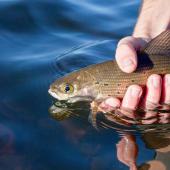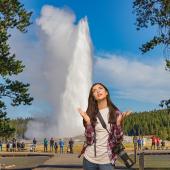River Ramblin'
Hunting Montana's waterways.
When new hunters inquire for tips and tricks on where to find game, be it big or small, my initial advice is always the same: look for the food, look for the water. The latter being especially important. Migratory birds live on or near water and almost all ungulates will drink at least once a day, more during the hotter months.
As you pore over maps, locate permanent water sources and mark them down. Mountainous areas will likely yield one prominent creek per large drainage, whereas prairie landscapes can be much drier. And just because you see it labeled on the map doesn’t mean it’ll be flowing when you’re there. Do your homework. Ask around, call an expert, go on a scouting mission—it’ll save you in the long run. I’ve been the guy who has put all his eggs in one basket, hoping a spring was running. I felt like an idiot when I packed in and found that it wasn’t.
Once you’ve located where the water is, zoom out and consider your quarry’s most desirable habitat. Elk have been known to travel up to three miles to drink, but that’s on the extreme end. Most critters reside within a square mile of a reliable source. This could be a river as large as the Yellowstone or a spring as small as a seep. Wildlife seek protection, so areas with thick cover or off the beaten path should be of particular note.
If hunting waterfowl, seek out spots secluded from the main channel and close to a food source. Think areas with little to no current and protection from wind. A back eddy adjacent to an agricultural field is typically a great spot to set decoys. Riparian areas can be productive grounds for upland birds like pheasants, too, especially later in the season when they’d rather run than fly. Find ditches with thick cover such as cattails and walk the rims, sending your dog into the cover to flush the birds.
Rivers and lakes can provide excellent habitat, but traveling through these areas may not be as easy as your map implies. Fall months are cold and conditions can change quickly. Ice-up can happen as early as November. If hunting by boat, make sure you know the state of the river before you go out, and prepare accordingly. Getting your vessel caught in an ice jam can ruin your day. Speaking of ice, breaking through some on your feet isn’t any better, and quite likely will be worse. Choose your crossing locations carefully and incorporate them into your hunt plan.
Hunting in wetland and riparian areas, it’s nice to have some dependable footwear to keep you dry. Chest-waders or hip boots are safe bets, depending on the particular zone. If it’s fairly shallow, you may be able to get away with a good muck boot. Keep in mind that air temperatures are typically cooler around water sources. If you plan to be in and around them all day, pack an extra layer.
Not only is water an important corridor for all sorts of wildlife, but it can act as a tactical passageway for hunters as well. Thanks to Montana’s stream access law, every public road, bridge, and access site that touches a river turns that spot into a de facto trailhead. Now, this doesn’t mean you can shoot animals above the high-water mark, even though you’re standing below it. Property boundaries still exist, and shooting and retrieving game on private property without permission is illegal. (It’s also illegal to hunt big-game animals below the high-water mark.) What the stream-access law provides is a legal means to travel up and down the river, so long as you remain below the high-water mark and are engaging in water-related activities. This is where a canoe, packraft, or a good set of waders can gain you access to public land that’s otherwise inaccessible.
When it comes to hunting islands, the rules get a bit murky. In large rivers, islands that were islands at the time of the original surveys are held in public domain. This is not necessarily true for areas where new channels have formed through private ground. In either case, big-game hunting is prohibited within the high-water mark. Research the area you plan to hunt ahead of time, know your rights, and ask permission if hunting private land.
So, with this in mind, hit the water. Done right, you’ll be notching tags and filling your freezer in no time.
To better understand the particulars of Montana’s stream-access law, search the Montana Code (online), Title 23, Chapter 2, Section 3: Recreational Use of Streams.














